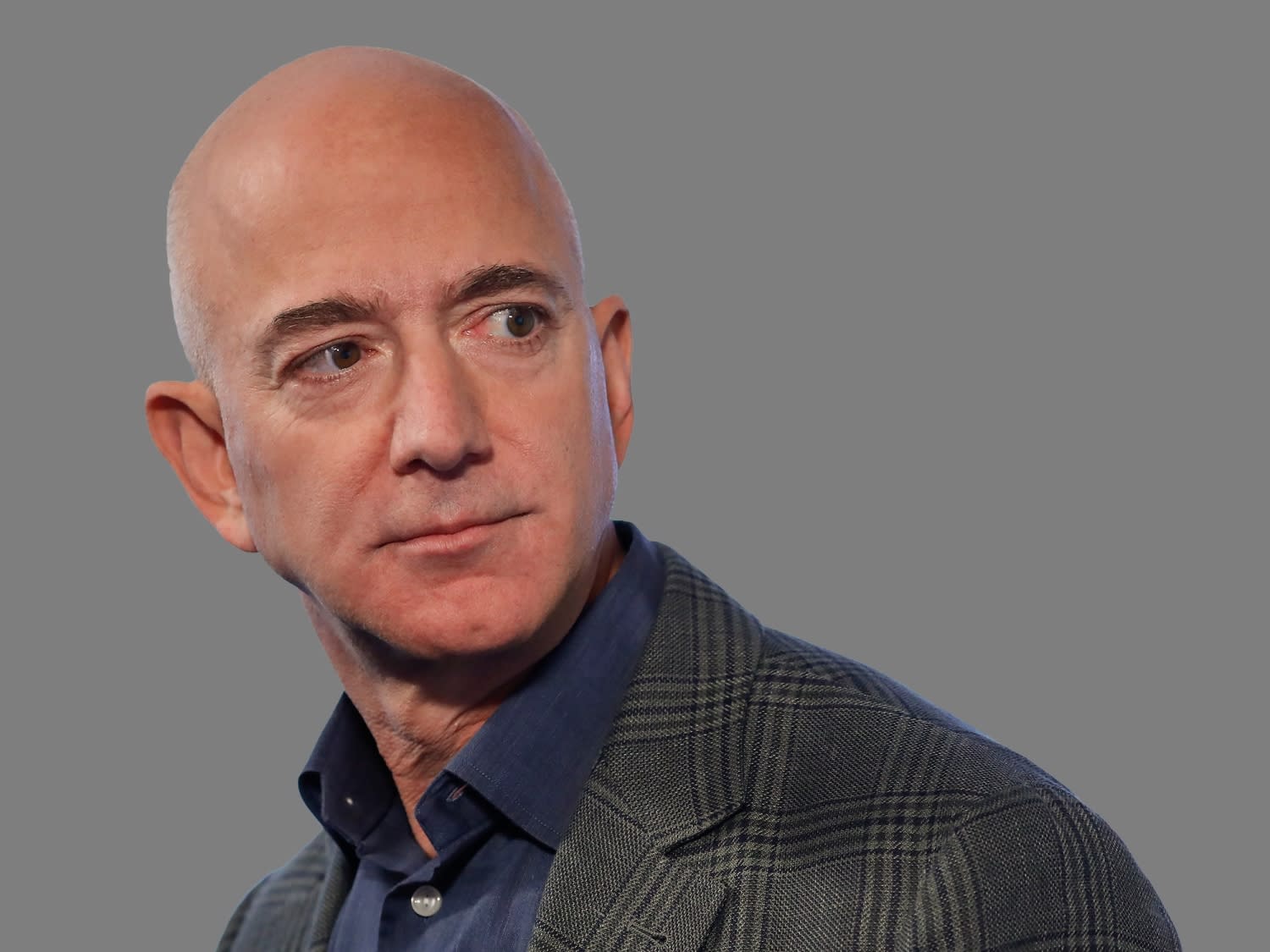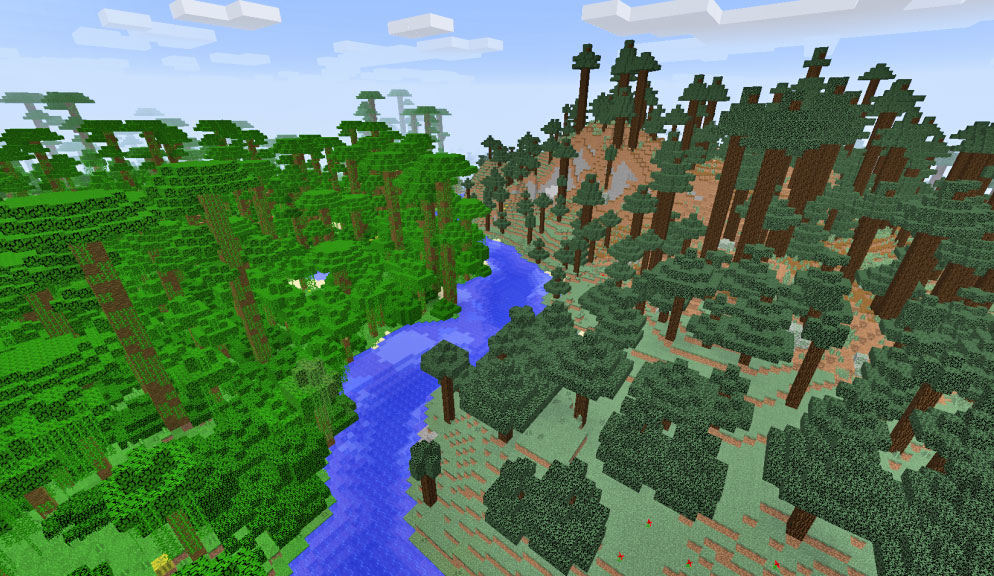Posts Tagged: Climate
Climate change has Seville so hot it’s started naming heat waves like hurricanes
The city of Seville is trying something new to raise awareness of climate change and save lives. With oppressive heat waves becoming a fact of life in Europe and other parts of the world, the Spanish metropolis has begun naming them. The first one, Zoe, arrived this week, bringing with it expected daytime highs above 109 degrees Fahrenheit (or 43 degrees Celsius).
As Time points out, there’s no single scientific definition of a heat wave. Most countries use the term to describe periods of temperatures that are higher than the historical and seasonal norms for a particular area. Seville’s new system categorizes those events into three tiers, with names reserved for the most severe ones and an escalating municipal response tied to each level. The city will designate future heat waves in reverse alphabetical order, with Yago, Xenia, Wenceslao and Vega to follow.
It’s a system akin to ones organizations like the US National Hurricane Center have used for decades to raise awareness of impending tropical storms, tornadoes and hurricanes. The idea is that people are more likely to take a threat seriously and act accordingly when it's given a name.
"This new method is intended to build awareness of this deadly impact of climate change and ultimately save lives," Kathy Baughman McLeod, director of the Adrienne Arsht-Rockefeller Foundation Resilience Center, the think tank that helped develop Seville’s system, told Euronews. Naming heat waves could also help some people realize that we're not dealing with occasional “freak” weather events anymore: they’re the byproduct of a warming planet.
COP26 climate change deal falls short on coal targets
The COP26 climate conference has come to an end, but it probably won't satisfy some of its more outspoken critics. Reuters and The Washington Post report that the United Nations-helmed summit has reached a final deal on efforts to accelerate emissions reduction and otherwise keep to a Paris Agreement target of limiting global warming to 1.5C. There are some areas where the new arrangement (billed by the UN as the Glasgow Climate Pact) may offer significant progress, but there are also concerns it doesn't hold countries to stricter standards — including a move away from coal energy.
In negotiations that extended roughly a day past the original November 12th deadline, representatives from China and India successfully changed language in the COP26 agreement that asked countries to "phase-down" unabated coal use rather than "phase-out." While COP26 president Alok Sharma and numerous countries' delegates wanted the tougher language, Sharma said it was "vital" to protect the deal. However, there are worries this will give coal-dependent countries like China and India an excuse to avoid firmer commitments to emissions reduction.
Previous critics blasted wealthier nations for failing to act on a promise of giving poorer countries $ 100 billion per year until 2023 to help them deal with climate change. The Glasgow deal only committed to making a new plan in the next three years.
The final pact does include some notable measures. It asks countries "revisit and strengthen" their climate change plans before the end of 2022, as New Scientistnoted. Similarly, there's a strategy to address long-running disputes over global carbon credit markets. Numerous countries promised to reduce methane emissions and stop deforestation, and the agreement called for reduced subsidies on fossil fuels. Separately, the US and China reached a deal to limit climate change in the 2020s, including a new recognition from China that methane had a significant impact on rising temperatures.
Nonetheless, there are fears the COP26 arrangement is generally too soft. It doesn't set many binding targets. The final language only "requests" that countries rethink their plans, for instance. The pact might prompt some countries to step up their environmental initiatives, but others may face relatively few consequences if they fall short.
NFTs have a climate problem, and the solution isn’t coming fast enough
NFTs have an absolutely massive carbon footprint, and while there are many solutions in the works, very few of them are expected to roll out anytime soon.
Emerging Tech | Digital Trends
Hitting the Books: Why that one uncle of yours continually refuses to believe in climate change
The holidays are fast approaching and you know what that means: pumpkin spice everything, seasonal cheer, and family gatherings — all while avoiding your QAnon adherent relatives like the plague. But when you do eventually get cornered by them, come prepared.
In his latest book, How to Talk to a Science Denier, author Lee McIntyre examines the phenomenon of denialism, exploring the conspiracy theories that drive it, and explains how you can most effectively address your relatives' misplaced concerns over everything from mRNA vaccines to why the Earth isn't actually flat.
How to Talk to a Science Denier: Conversations with Flat Earthers, Climate Deniers, and Other Who Defy Reason, by Lee McIntyre, published by The MIT Press.
Belief in conspiracy theories is one of the most toxic forms of human reasoning. This is not to say that real conspiracies do not exist. Watergate, the tobacco companies’ collusion to obfuscate the link between cigarette smoking and cancer, and the George W. Bush–era NSA program to secretly spy on civilian Internet users are all examples of real-life conspiracies, which were discovered through evidence and exposed after exhaustive investigation.
By contrast, what makes conspiracy theory reasoning so odious is that whether or not there is any evidence, the theory is asserted as true, which puts it beyond all reach of being tested or refuted by scientists and other debunkers. The distinction, therefore, should be between actual conspiracies (for which there should be some evidence) and conspiracy theories (which customarily have no credible evidence). We might define a conspiracy theory as an “explanation that makes reference to hidden, malevolent forces seeking to advance some nefarious aim.” Crucially, we need to add that these tend to be “highly speculative [and] based on no evidence. They are pure conjecture, without any basis in reality.”
When we talk about the danger of conspiracy theories for scientific reasoning, our focus should therefore be on their nonempirical nature, which means that they are not even capable of being tested in the first place. What is wrong with conspiracy theories is not normally that they have already been refuted (though many have), but that thousands of gullible people will continue to believe them even when they have been debunked.
If you scratch a science denier, chances are you’ll find a conspiracy theorist. Sadly, conspiracy theories seem to be quite common in the general population as well. In a recent study by Eric Oliver and Thomas Wood they found that 50 percent of Americans believed in at least one conspiracy theory.
This included the 9/11 truther and Obama birther conspiracies, but also the idea that the Food and Drug Administration (FDA) is deliberately withholding a cure for cancer, and that the Federal Reserve intentionally orchestrated the 2008 recession. (Notably, the JFK assassination conspiracy was so widely held that it was excluded from the study.)
Other common conspiracy theories — which run the range of popularity and outlandishness — are that “chemtrails” left by planes are part of a secret government mind-control spraying program, that the school shootings at Sandy Hook and Parkland were “false flag” operations, that the government is covering up the truth about UFOs, and of course the more “science-related” ones that the Earth is flat, that global warming is a hoax, that some corporations are intentionally creating toxic GMOs, and that COVID-19 is caused by 5G cell phone towers.
In its most basic form, a conspiracy theory is a non-evidentially justified belief that some tremendously unlikely thing is nonetheless true, but we just don’t realize it because there is a coordinated campaign run by powerful people to cover it up. Some have contended that conspiracy theories are especially prevalent in times of great societal upheaval. And, of course, this explains why conspiracy theories are not unique to modern times. As far back as the great fire of Rome in 64 AD, we saw conspiracy theories at work, when the citizens of Rome became suspicious over a weeklong blaze that consumed almost the entire city — while the emperor Nero was conveniently out of town. Rumors began to spread that Nero had started it in order to rebuild the city in his own design. While there was no evidence that this was true (nor for the legend that Nero sang while the city burned), Nero was apparently so upset by the accusation that he started his own conspiracy theory that it was in fact the Christians who were responsible, which led to the prevalence of burning them alive.
Here one understands immediately why conspiracy theories are anathema to scientific reasoning. In science, we test our beliefs against reality by looking for disconfirming evidence. If we find only evidence that fits our theory, then it might be true. But if we find any evidence that disconfirms our theory, it must be ruled out. With conspiracy theories, however, they don’t change their views even in the face of disconfirming evidence (nor do they seem to require much evidence, beyond gut instinct, that their views are true in the first place). Instead, conspiracy theorists tend to use the conspiracy itself as a way to explain any lack of evidence (because the clever conspirators must be hiding it) or the presence of evidence that disconfirms it (because the shills must be faking it). Thus, lack of evidence in favor of a conspiracy theory is in part explained by the conspiracy itself, which means that its adherents can count both evidence and lack of evidence in their favor.
Virtually all conspiracy theorists are what I call “cafeteria skeptics.” Although they profess to uphold the highest standards of reasoning, they do so inconsistently. Conspiracy theorists are famous for their double standard of evidence: they insist on an absurd standard of proof when it concerns something they do not want to believe, while accepting with scant to nonexistent evidence whatever they do want to believe. We have already seen the weakness of this type of selective reasoning with cherry-picking evidence. Add to this a predilection for the kind of paranoid suspicion that underlies most conspiracy-minded thinking, and we face an almost impenetrable wall of doubt. When a conspiracy theorist indulges their suspicions about the alleged dangers of vaccines, chemtrails, or fluoride — but then takes any contrary or debunking information as itself proof of a cover-up — they lock themselves in a hermetically sealed box of doubt that no amount of facts could ever get them out of. For all of their protests of skepticism, most conspiracy theorists are in fact quite gullible.
Belief in the flatness of the Earth is a great example. Time and again at FEIC 2018, I heard presenters say that any scientific evidence in favor of the curvature of the Earth had been faked. “There was no Moon landing; it happened on a Hollywood set.” “All the airline pilots and astronauts are in on the hoax.” “Those pictures from space are Photoshopped.” Not only did disconfirming evidence of these claims not cause the Flat Earthers to give up their beliefs, it was used as more evidence for the conspiracy! And of course to claim that the devil is behind the whole cover-up about Flat Earth could there be a bigger conspiracy theory? Indeed, most Flat Earthers would admit that themselves. A similar chain of reasoning is often used in climate change denial. President Trump has long held that global warming is a “Chinese hoax” meant to undermine the competitiveness of American manufacturing.
Others have contended that climate scientists are fudging the data or that they are biased because they are profiting from the money and attention being paid to their work. Some would argue that the plot is even more nefarious — that climate change is being used as a ruse to justify more government regulation or takeover of the world economy. Whatever evidence is presented to debunk these claims is explained as part of a conspiracy: it was faked, biased, or at least incomplete, and the real truth is being covered up. No amount of evidence can ever convince a hardcore science denier because they distrust the people who are gathering the evidence. So what is the explanation? Why do some people (like science deniers) engage in conspiracy theory thinking while others do not?
Various psychological theories have been offered, involving factors such as inflated self-confidence, narcissism, or low self-esteem. A more popular consensus seems to be that conspiracy theories are a coping mechanism that some people use to deal with feelings of anxiety and loss of control in the face of large, upsetting events. The human brain does not like random events, because we cannot learn from and therefore cannot plan for them. When we feel helpless (due to lack of understanding, the scale of an event, its personal impact on us, or our social position), we may feel drawn to explanations that identify an enemy we can confront. This is not a rational process, and researchers who have studied conspiracy theories note that those who tend to “go with their gut” are the most likely to indulge in conspiracy-based thinking. This is why ignorance is highly correlated with belief in conspiracy theories. When we are less able to understand something on the basis of our analytical faculties, we may feel more threatened by it.
There is also the fact that many are attracted to the idea of “hidden knowledge,” because it serves their ego to think that they are one of the few people to understand something that others don’t know. In one of the most fascinating studies of conspiracy-based thinking, Roland Imhoff invented a fictitious conspiracy theory, then measured how many subjects would believe it, depending on the epistemological context within which it was presented. Imhoff’s conspiracy was a doozy: he claimed that there was a German manufacturer of smoke alarms that emitted high-pitched sounds that made people feel nauseous and depressed. He alleged that the manufacturer knew about the problem but refused to fix it. When subjects thought that this was secret knowledge, they were much more likely to believe it. When Imhoff presented it as common knowledge, people were less likely to think that it was true.
One can’t help here but think of the six hundred cognoscenti in that ballroom in Denver. Out of six billion people on the planet, they were the self-appointed elite of the elite: the few who knew the “truth” about the flatness of the Earth and were now called upon to wake the others.
What is the harm from conspiracy theories? Some may seem benign, but note that the most likely factor in predicting belief in a conspiracy theory is belief in another one. And not all of those will be harmless. What about the anti-vaxxer who thinks that there is a government cover-
up of the data on thimerosal, whose child gives another measles? Or the belief that anthropogenic (human- caused) climate change is just a hoax, so our leaders in government feel justified in delay? As the clock ticks on averting disaster, the human consequences of the latter may end up being incalculable.
Hitting the Books: How autonomous EVs could help solve climate change
Climate change is far and away the greatest threat of the modern human era — a crisis that will only get worse the longer we dither — with American car culture as a major contributor to the nation’s greenhouse emissions. But carbon-neutralizing energ…
Engadget
Jeff Bezos pledges $10 billion to combat climate change

Engadget RSS Feed


‘Minecraft’ mod fosters a collaborative effort against climate change
 A Minecraft modder has added some fresh gameplay issues for players to deal with in the form of climate change. Nick Porillo's GlobalWarming mod alters the atmosphere based on certain actions like smelting ores. Temperatures will rise as carbon emiss…
A Minecraft modder has added some fresh gameplay issues for players to deal with in the form of climate change. Nick Porillo's GlobalWarming mod alters the atmosphere based on certain actions like smelting ores. Temperatures will rise as carbon emiss…
Engadget RSS Feed


Climate change is making it harder for airplanes to take off
 We already know that climate change might make air travel more turbulent. But now it looks like it will impact it in an even more drastic way: A new study in the journal Climatic Change examines how rising air temperatures will affect airplanes' abil…
We already know that climate change might make air travel more turbulent. But now it looks like it will impact it in an even more drastic way: A new study in the journal Climatic Change examines how rising air temperatures will affect airplanes' abil…
Engadget RSS Feed


Fungi can help NASA deduce how climate change affects forests
 A team from NASA's Jet Propulsion Laboratory has developed a new method to detect what kind of mycorrhizae are attached to the roots of trees using only satellite images. Mycorrhizae are fungi that form mutually beneficial relationships with the root…
A team from NASA's Jet Propulsion Laboratory has developed a new method to detect what kind of mycorrhizae are attached to the roots of trees using only satellite images. Mycorrhizae are fungi that form mutually beneficial relationships with the root…
Engadget RSS Feed
Climate change affects the things we love. #OursToLose
From seasons to octopuses and chocolate, environmental issues stand to impact the things we love. What if we could help change the way people discuss climate change, so that the issue and its consequences could become more relevant and tangible to people around the world?
Leading up to COP21, a conference which will bring leaders from around the world together to develop a global climate agreement, we’re encouraging the YouTube community to join the discussion by uploading their own videos that share their concerns about how environmental issues may impact the things they love. The conversation on YouTube will live through a simple hashtag: #OursToLose.
With the help of YouTube creators from around the world, including Casey Neistat (U.S.), Finn Harries (U.K.), Golden Moustache (France), Jamie Curry (New Zealand) and Flavia Calina (Brazil), we’re also encouraging people to show further support by signing the Avaaz petition, a campaign aimed at delivering clean energy worldwide by 2050.
Whether you’re questioning how global warming can impact your day-to-day life, curious about new sources of energy, or concerned about the melting Arctic, we hope that you share your ideas through #OursToLose videos to help make the climate conversation more accessible to people around the world.
The YouTube community can empower tremendous collaboration, advocacy, and creativity. Through #OursToLose, we hope to continue helping people to broadcast their message, empower their communities, and even catalyze a global movement to further action on climate change.
Marc Hertz, Programming Coordinator, recently watched “Misconceptions about Climate Change” and Aaron Taylor, Associate Product Marketing Manager, recently watched “What’s Possible: The UN Climate Summit Film.”
